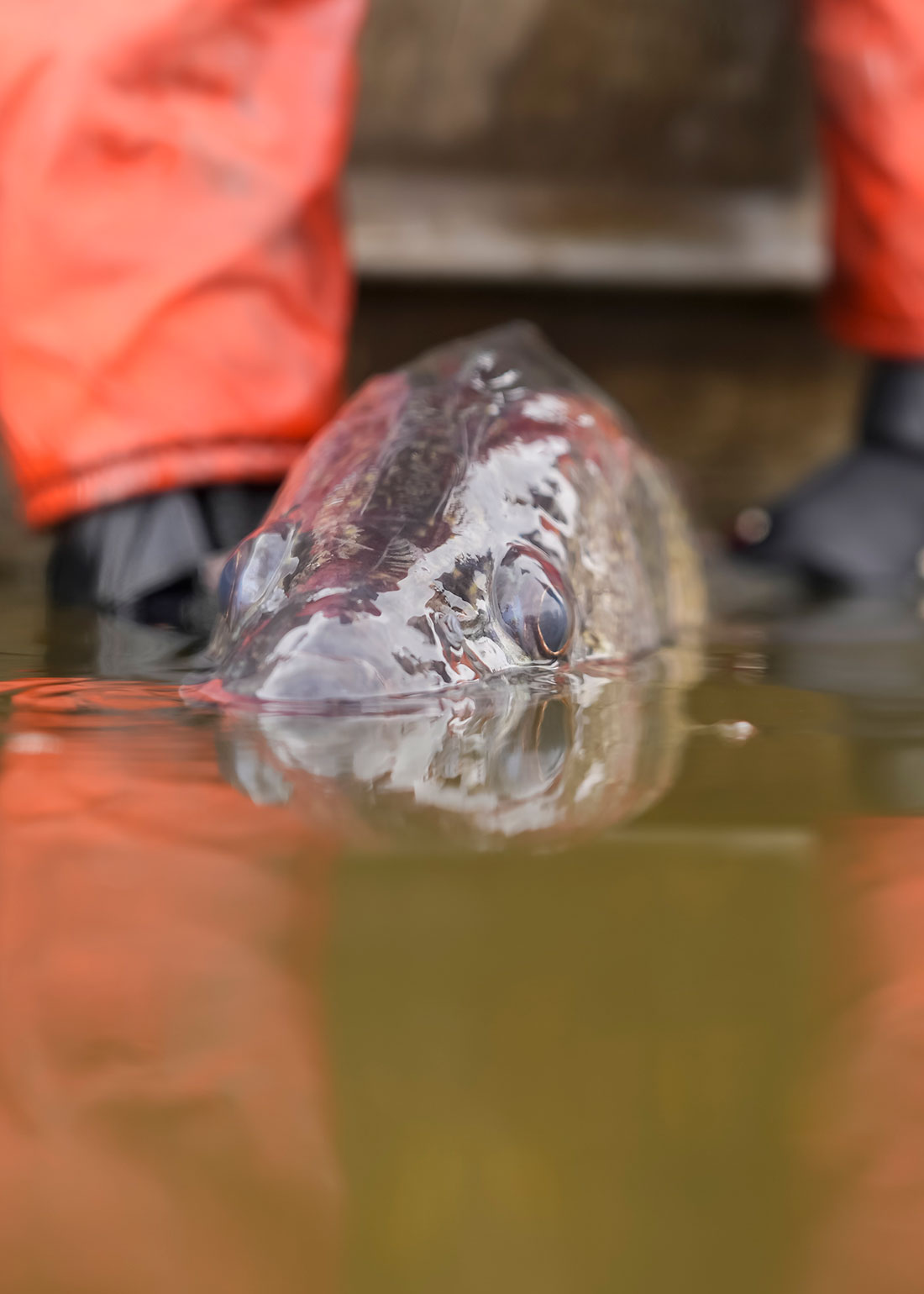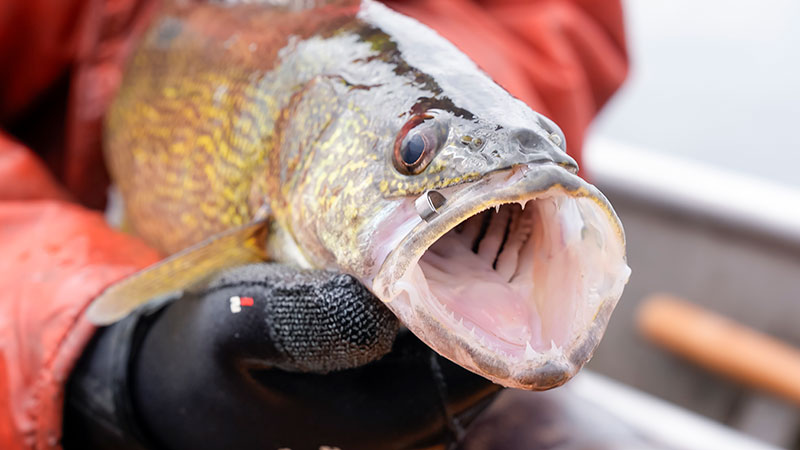Marked Fish, Multiple Waters
Ron Wilson

A walleye tagging study was started in spring on Devils Lake to gain a deeper understanding of how anglers are utilizing the state’s most sought-after species.
It’s been nearly 20 years since the North Dakota Game and Fish Department initiated a study using marked walleyes on this popular fishery.
Todd Caspers, Department fisheries biologist in Devils Lake, said the aim of the new three-year study is to tag at least 1,000 walleyes each year throughout the lake’s reach.
“The purpose of this study is to estimate the exploitation rate on our walleye, or basically the percentage of the fish that anglers are going to harvest each year,” Caspers said.
While the three-year study at Devils Lake is the state’s longest-running look into a walleye fishery, Department fisheries biologists from around North Dakota earlier in spring initiated one-year walleye tagging studies on six other waters: Lake Addie, Griggs County; Mosher WPA, Barnes County; Horsehead Lake, Kidder County; Davis WPA, Sheridan County; Heart Butte Dam, Grant County; and the Missouri River System from Garrison Dam to Oahe Dam. The latter study is a team effort between the Game and Fish Department and South Dakota Game, Fish and Parks.
“One reason that we conceptualize this multi-lake, multi-year study is to gather information from a wide variety of populations,” said Scott Gangl, Department fisheries management section leader. “So, putting it all together gives us a bigger picture to say whether our statewide regulations are serving our fisheries well over a broader scale than just looking at exploitation on a single lake.”
Caspers said the walleye fitted with metal jaw tags in Devils Lake ranged from 13 to 30-plus inches, or those fish anglers are interested in harvesting for the table or maybe for hanging on the wall.
“We’re running this study on Devils Lake longer than the other fisheries because one year the fishing might be really good and exploitation might be a little higher, and vice versa if it’s a slower year for walleye fishing and exploitation would likely be lower,” Caspers said. “So, in the three years we’ll see that kind of average out to get a better picture of what our exploitation rate is.”

Game and Fish Department fisheries biologist, watches as Jonathon Simak, fisheries seasonal personnel, releases a tagged walleye back into Devils Lake. The walleyes fitted with jaw tags in the three-year study on Devils Lake ranged from 13 to 30-plus inches.
The waters picked for the tagging studies are well-developed walleye fisheries, lakes anglers are likely to target and, in return, report their catches of tagged fish.
“They don’t necessarily have to be lakes that we expect fishing to be really good this year because we want to see the spectrum of exploitation. We want to see the spectrum of fishing quality out there,” Gangl said. “Some of them could be really good, some of them could be a little bit slower and the tag returns will come in a little bit slower.”
When it comes time to report the study fish, fisheries managers want anglers to treat the tagged walleyes just as they would treat any other fish they might have caught. So, if it’s a fish an angler was planning on harvesting, go ahead and harvest that fish. If it’s a fish an angler was planning on releasing, go ahead and release that fish. Just record the tag number and leave the tag on the fish.


